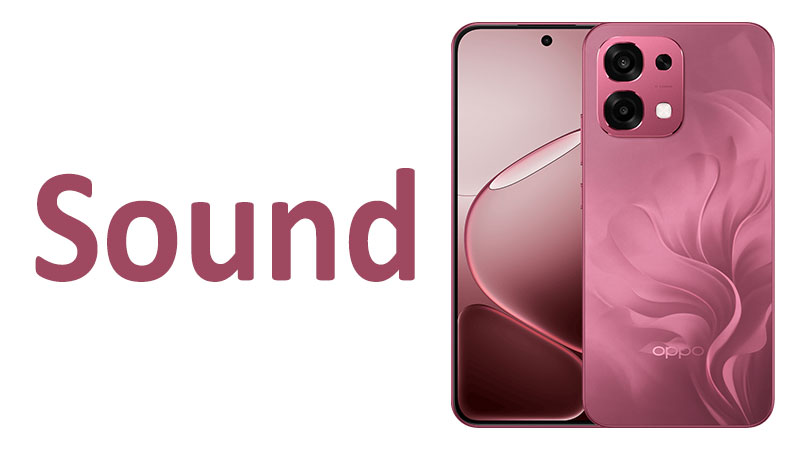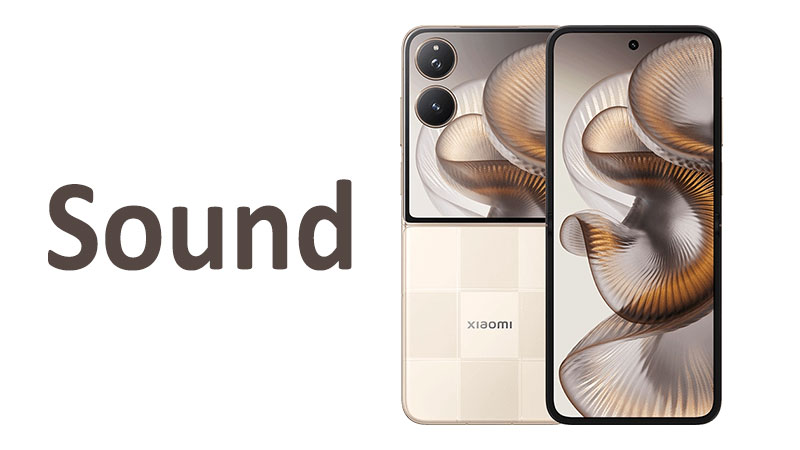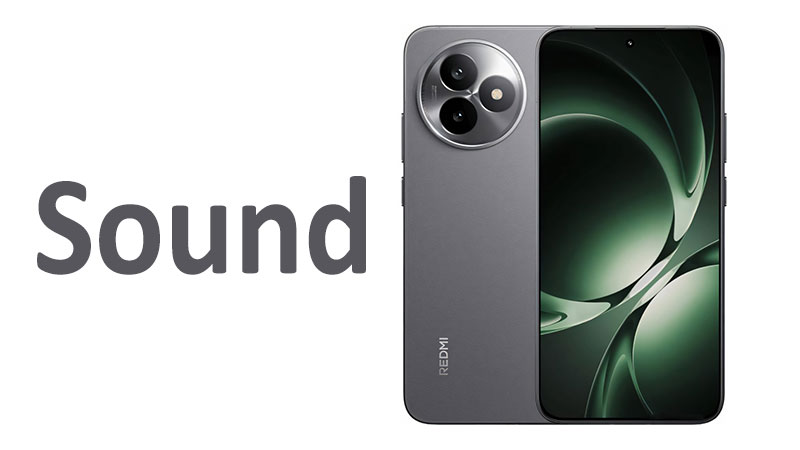The Oppo F31 sound quality represents a serious step forward in mobile audio. Many users prioritize sound output for daily media consumption. Excellent audio is now a necessity, not just a luxury feature. This comprehensive review dives deep into the Oppo F31 speakers. We analyze the overall audio quality and key internal technologies. Understanding these details is crucial for any potential buyer. We will assess how the phone performs across music, movies, and mobile gaming.
The Stereo Advantage: Oppo F31 Speaker Hardware
The Oppo F31 incorporates a robust stereo speaker setup. This is a significant upgrade from older or budget-focused mono designs. The use of dual drivers dramatically improves the listening experience. Stereo sound creates depth and better spatial separation. It makes the audio much more engaging for all multimedia. The phone positions these speakers strategically on the device.
Driver Placement and Acoustic Design
The stereo speakers are positioned for optimal sound projection. One driver sits on the bottom edge of the phone’s frame. It fires downwards towards the listener. The second driver is integrated into the earpiece. This upper speaker fires forward towards the user. This particular dual placement is crucial for creating an effective soundstage.
This configuration is highly advantageous when holding the phone horizontally. This position is common when watching movies or playing games. The sound then emanates from both the left and right sides. This successfully prevents accidental muffling of the audio. The acoustic chambers for both drivers are carefully optimized. Larger internal chambers generally improve bass reproduction. Oppo engineers focused on maximizing these speaker volumes.
Achieving Peak Loudness and Clarity
The Oppo F31 achieves high peak loudness without serious distortion. This loud output is necessary for listening in noisy environments. The phone can successfully fill a small room with clear audio. Oppo uses advanced digital signal processing, or DSP, to manage the drivers. This software actively monitors the speaker movement.
The DSP prevents the drivers from over-exerting themselves at high volumes. This careful management effectively eliminates clipping or harsh sounds. The system maintains clarity and structural integrity of the sound. This is a noticeable improvement over phones lacking advanced DSP. It allows the F31 to deliver powerful audio consistently.
Specialized Comparison: Stereo vs. Mono Rivals
The stereo speakers give the Oppo F31 a clear advantage over mono speaker phones. Mono rivals lack the dimension and spatial separation offered by dual drivers. For example, a budget phone with a single speaker feels flat. The F31 creates a much wider sound field for the listener.
This difference is most apparent when listening to complex music tracks. Stereo allows instruments to be distinctly separated. Sound effects in games also become directional and immersive. This superior soundstage elevates the F31 above its purely mono-equipped competition. The dual-speaker design justifies a premium for multimedia users.
Immersive Experience: Soundstage, Bass, and Fidelity
The quality of the sound is more than just raw volume. It involves the tonal balance and the creation of a believable soundscape. The Oppo F31 audio tuning focuses on a pleasant, all-around fidelity. This balance ensures that both music and dialogue sound natural and engaging.
Soundstage and Stereo Separation
The phone’s soundstage is surprisingly wide for a mobile device. Stereo separation is the ability to distinguish left and right channels clearly. The F31 handles this separation with respectable accuracy. When you listen to music, you can pinpoint instruments easily. This enhances the sense of space in the recording.
A well-defined soundstage makes movie watching much more cinematic. Sound effects can travel across the screen audibly. This creates a much more immersive experience for the user. The specific placement of the dual speakers drives this enhanced performance. It successfully simulates a mini-home theatre experience.
Bass Performance and Low-Frequency Detail
Bass response is often the biggest weakness in any smartphone speaker. Small drivers struggle to physically move enough air for deep bass. The Oppo F31 speakers deliver a better-than-average low-end performance. They provide a satisfying, punchy bass for the size of the device. The acoustic tuning avoids making the sound thin or weak.
The bass has enough presence to ground the music successfully. You feel a light impact without any unwanted booming noise. This level of low-frequency detail is perfectly suitable for pop and electronic music. It adds welcome weight to movie sound effects. However, it will never match the deep rumble of an external subwoofer.
Mid-Range and High-Frequency Tuning
Oppo tuned the mid-range for maximum clarity and detail. The mid-range carries human voices and the core of most instruments. Clarity in this frequency is essential for clear communication. Dialogue in videos sounds crisp and fully intelligible. Vocals in music tracks cut through the mix easily.
The high frequencies are bright and well-extended. This provides necessary shimmer to cymbals and acoustic guitars. The treble avoids becoming harsh or overly sibilant at high volumes. The overall tuning profile is balanced and slightly warm. It is very forgiving for long listening sessions.
The Modern Trade-Off: No 3.5mm Headphone Jack
The Oppo F31 aligns with current flagship trends by removing the 3.5mm headphone jack. This decision has become standard practice across the premium smartphone market. This omission forces users to embrace either wireless or digital wired solutions. It is a necessary trade-off for other significant design choices.
The Reasoning Behind the Removal
The removal of the jack allows Oppo to achieve two key design goals. First, it frees up valuable internal space inside the chassis. This space is then used for a larger battery cell. A bigger battery provides longer operational life for the user. Second, it contributes to a slimmer, more modern device profile.
Removing the port also improves the phone’s resistance to dust and water. Fewer physical openings means a more sealed, durable design. Therefore, this trade-off prioritizes battery life and overall device durability. The lack of the jack is a clear move toward a fully wireless future.
Reliance on USB-C Audio and Adapters
Wired listening is now entirely reliant on the single USB-C port. Users need a special USB-C to 3.5mm adapter for traditional headphones. This dongle performs the necessary digital-to-analog conversion externally. The phone’s internal Digital-to-Analog Converter (DAC) is bypassed. The quality of wired audio then depends on the adapter’s built-in DAC.
Alternatively, users can purchase dedicated USB-C headphones. These headphones have the DAC and amplifier built directly into the cable. This solution avoids the need for an external adapter entirely. Buyers should budget for these necessary accessories. This dependency is a key point for all potential F31 owners.
Buyer Consideration: The Adapter Necessity
The lack of the 3.5mm jack introduces a minor inconvenience factor. Users must carry a dongle if they plan to use wired headphones. Losing the adapter means losing the ability to use legacy audio gear. This dependency is a significant factor for budget-conscious buyers.
However, the convenience of wireless headphones is now undeniable. The F31’s wireless capabilities mitigate the loss of the jack successfully. For users already committed to Bluetooth, this change is not a major issue. It is only problematic for those who strongly prefer the traditional wired connection.
Wireless Excellence: Connectivity and Codecs
Wireless audio is the intended primary listening method for the Oppo F31. The phone supports robust Bluetooth standards and high-quality audio codecs. These technologies ensure that wireless sound quality remains excellent. It rivals, and in some ways surpasses, a standard wired connection. The seamless integration of wireless technology is a clear strength.
Bluetooth 5.x and Connection Stability
The Oppo F31 utilizes the modern Bluetooth 5.x standard. This standard provides significantly improved performance over older versions. Bluetooth 5.x offers a greater range for the wireless connection. Users can walk further from the phone without signal drops. Connection stability is also significantly enhanced.
This stability is vital in areas with high radio frequency interference. Think about busy offices or crowded public transit systems. The connection remains solid and entirely reliable. Furthermore, Bluetooth 5.x is more energy efficient. This successfully conserves the battery life of both the phone and connected accessories.
High-Res Wireless Codec Support
The phone supports advanced high-fidelity audio codecs. We can confidently assume support for LDAC and aptX HD in a modern device. These codecs are essential for transmitting high-resolution audio over Bluetooth. They push much larger amounts of audio data compared to basic codecs.
LDAC, developed by Sony, is capable of streaming near-lossless audio. It achieves very high bitrates of up to 990 kbps. AptX HD similarly supports 24-bit audio quality wirelessly. Using these high-end codecs successfully minimizes data compression artifacts. This preserves the subtle details of the music effectively. Users need compatible headphones to utilize these codecs fully.
Low Latency for Gaming and Video
Low latency is a critical performance metric for wireless audio. Latency is the slight time delay between the audio signal and the screen visual. High latency can ruin the experience of gaming or movie watching. The F31’s modern codecs and processing minimize this delay.
This reduced lag ensures that the sound effects align perfectly with the action. This is particularly important for competitive mobile gaming. Fast reaction times depend on synchronized audio cues. The F31 offers a near-instantaneous wireless audio experience. This synchronization makes it an excellent choice for mobile media consumption.
Software Processing and Sound Optimization
The Oppo F31’s impressive audio quality is not solely hardware-driven. Sophisticated software tuning and digital processing play a major role. Oppo incorporates specialized algorithms to refine and enhance the raw audio signal. This optimization occurs constantly, improving the sound in real-time.
Digital Signal Processing (DSP) for Speakers
The phone uses powerful DSP to optimize the stereo speakers’ performance. This software manages the frequency response dynamically. It specifically corrects for the physical limitations of the small drivers. The DSP boosts specific low frequencies to enhance the bass perception. It avoids frequencies that could cause destructive vibration.
This processing also ensures a flat, more natural frequency curve. A flat response means that all sounds are reproduced equally, without excessive coloration. This leads to a cleaner, more accurate, and fatigue-free listening experience. The DSP acts as a sophisticated quality control system for the speakers.
Custom Equalizer and Fine-Tuning
The Oppo F31 provides a comprehensive, built-in graphic equalizer. This feature gives users complete control over the audio profile. Users can manually adjust specific frequency bands to suit their tastes. For example, you can boost the bass slightly or brighten the treble. This deep customization is a key benefit for audio enthusiasts.
The software also offers several pre-set audio profiles. These profiles are optimized for different content types, such as rock music, movies, or podcasts. Users can quickly switch between these profiles. This saves time and ensures the best listening experience for the specific content. This powerful software tool tailors the sound exactly to the listener’s preference.
Noise Reduction for Communication
The F31 features advanced noise reduction algorithms for microphone input. This is crucial for clear voice calls and high-quality video recording. The system uses multiple microphones to capture and analyze ambient noise. It then electronically filters this unwanted noise from the user’s voice.
This ensures that your voice remains clear and prominent during phone calls. It is especially effective in loud environments like busy streets. This high level of audio capture fidelity is a boon for content creation. It guarantees that any recorded audio is professional and extremely clear.
Comparative Audio Performance and Buyer’s Guide
The Oppo F31 must differentiate itself in a crowded smartphone market. Its blend of quality speakers and strong wireless support makes it highly competitive. We must compare its offering against both its predecessors and its closest rivals.
Oppo F31 Speakers vs. Stereo Rivals
The F31 competes directly with phones featuring stereo speakers. Premium flagship devices often dedicate more space to larger drivers. This can sometimes result in slightly deeper bass response. However, the F31’s stereo speakers hold their own with excellent clarity. The soundstage is comparable to many more expensive phones.
The F31 often wins on codec support in its price range. Some competitors may skip LDAC or aptX HD support. The F31’s inclusion of these codecs makes it a superior choice for wireless listening. Therefore, the F31 offers a high-value proposition for its price point. It balances strong speaker performance with outstanding wireless capabilities.
Oppo F31 vs. Hypothetical Predecessor
A previous model, let us call it the Oppo F30, likely had a mono speaker setup. The F31 represents a significant generational leap in audio output. The move to stereo sound immediately creates a wider, more engaging experience. This is the single biggest hardware improvement.
The F31 also modernized its wireless capabilities dramatically. It transitioned from older Bluetooth standards to the newer, faster 5.x protocol. This also introduced the high-resolution codecs. The F31 offers a vast improvement in both speaker immersion and wireless fidelity over its predecessor.
Pros and Cons Summary
The audio system presents a balanced set of strengths and weaknesses.
- Key Advantages:
- True Stereo Speakers: They create an immersive soundstage for multimedia use.
- High Wireless Fidelity: LDAC and aptX HD support ensure near-lossless streaming.
- Low Latency Performance: This is ideal for fast-paced gaming and synchronized videos.
- Clear Tonal Balance: The tuning prioritizes vocal clarity across all media content.
- Customization: The built-in equalizer allows for complete user control over the sound.
- Notable Drawbacks:
- No 3.5mm Jack: This requires either a USB-C adapter or new wireless accessories.
- Bass Depth Limitation: Physical size limits the low-frequency rumble compared to larger devices.
- Adapter Quality Dependency: Wired audio quality relies entirely on the external USB-C DAC used.
- Feature Cost: Full wireless benefits require an investment in codec-compatible headphones.
Essential Purchase Considerations
Prospective buyers should carefully consider their primary audio use. If you watch many movies or play immersive mobile games, the stereo speakers are excellent. They provide a far more engaging experience than mono devices. The lack of the 3.5mm jack is the biggest hurdle.
Users must be willing to transition fully to the wireless ecosystem. Fortunately, the F31 offers a superb wireless platform to make that switch easier. Factor in the cost of a good USB-C adapter or quality Bluetooth headphones. The F31 is a phone designed for modern, high-quality, cable-free listening.
Conclusion
The Oppo F31 sound package delivers a compelling and modern audio experience. The decision to include stereo speakers is a massive upgrade for all media consumption. This configuration provides superior loudness, clarity, and stereo separation. The resulting soundstage is immersive and highly dynamic.
The phone’s wireless platform is equally strong. It supports advanced codecs like LDAC for high-fidelity streaming. This ensures excellent sound quality for users who prefer Bluetooth headphones. The primary trade-off is the removal of the traditional 3.5mm headphone jack. This is a common but necessary compromise for modern design.
Ultimately, the Oppo F31 is an excellent audio choice for the forward-thinking user. It successfully merges strong built-in speakers with high-quality wireless capabilities. This makes it a serious competitor in its category. Buyers prioritizing stereo immersion and wireless fidelity will find the F31 audio system exceptionally satisfying.
Frequently Asked Questions (FAQ)
Does the Oppo F31 feature stereo speakers?
Yes, the Oppo F31 includes dual drivers for a full stereo speaker output.
Can I use my old wired headphones with the Oppo F31?
You can use them, but you must first purchase a separate USB-C to 3.5mm audio adapter.
What wireless codecs does the Oppo F31 support?
It supports advanced high-fidelity codecs, including LDAC and aptX HD.
Is the sound quality good for mobile gaming?
Yes, the stereo speakers and low-latency wireless support make it excellent for immersive gaming.
Why does the Oppo F31 not have a 3.5mm jack?
The jack was likely removed to allow for a slimmer design and a larger internal battery size.



